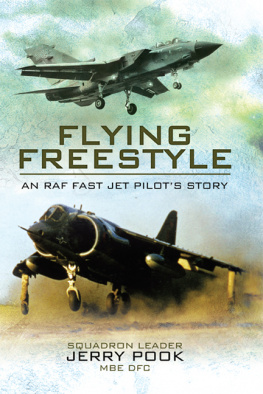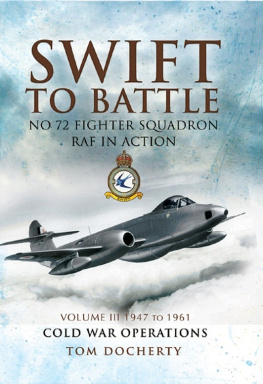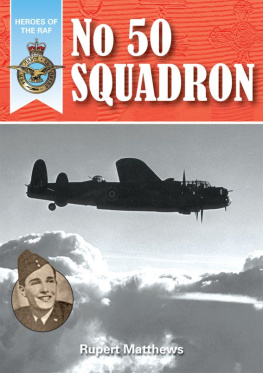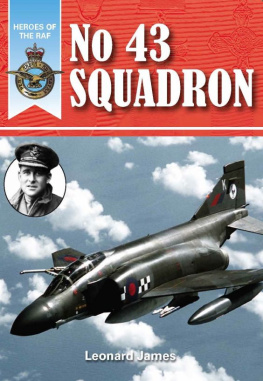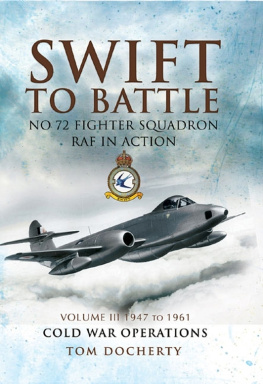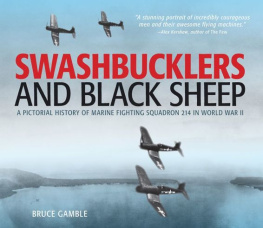
Barakaldo Books 2020, all rights reserved. No part of this publication may be reproduced, stored in a retrieval system or transmitted by any means, electrical, mechanical or otherwise without the written permission of the copyright holder.
Publishers Note
Although in most cases we have retained the Authors original spelling and grammar to authentically reproduce the work of the Author and the original intent of such material, some additional notes and clarifications have been added for the modern readers benefit.
We have also made every effort to include all maps and illustrations of the original edition the limitations of formatting do not allow of including larger maps, we will upload as many of these maps as possible.
A HISTORY OF MARINE FIGHTER ATTACK SQUADRON 321
BY
COMMANDER PETER B. MERSKY, U.S. NAVY RESERVE
A McDonnell-Douglas F-4S Phantom flies over the nations capital. The F-4S carries the low visibility camouflage scheme which had been the standard in the 1980s. ( Photo courtesy of Capt. Tom Dunlavage, USMCR )
HISTORY AND MUSEUMS DIVISION HEADQUARTERS, U.S. MARINE CORPS WASHINGTON, D.C.
1991
TABLE OF CONTENTS
Contents
TABLE OF CONTENTS
REQUEST FROM THE PUBLISHER
Foreword
This historical monograph is one of a series of active duty and Reserve squadron histories. When completed, the series will cover each squadron in the Fleet Marine Force. This volume highlights the significant activities of Marine Fighter Attack Squadron 321 during its more than 40 years of active and Reserve service. Since its commissioning in February 1943, the squadron has evolved from a group of inexperienced wartime pilots flying F4U Corsairs to todays Reservists in their F/A-18 Hornets.
Commander Peter Mersky is a graduate of the Rhode Island School of Design with a baccalaureate degree in illustration. He was commissioned in the Navy through Air Officer Candidate School in May 1968. Following active duty, he remained in the Naval Reserve and served two tours as an air intelligence officer with Light Photographic Squadron 306, one of the Navys two last Crusader squadrons.
Commander Mersky currently serves as assistant editor for Approach , the Navys safety magazine, published by the Naval Safety Center in Norfolk, Virginia. He also has written or co-authored several works on Navy and Marine Corps aviation, including The Naval Air War in Vietnam , with Norman Polmar; U.S. Marine Corps Aviation, 1912-Present , and numerous magazine articles in both American and British publications.
In the pursuit of accuracy and objectivity, the History and Museums Division welcomes comments on this monograph from key participants, Marine Corps activities, and interested individuals.
E. H. SIMMONS
Brigadier General, U.S. Marine Corps (Retired)
Director of Marine Corps History and Museums
Preface
During World War II, Marine Fighting Squadron (VMF) 321 enjoyed a brief, but successful, career as one of the many such units which contributed to the Allied victory in the Pacific. However, where many of its sister squadrons eventually disappeared during the post-war demobilization, VMF-321 was reborn at Naval Station Anacostia on the outskirts of the nations capital as the first Marine Air Reserve fighter squadron, a role in which it continues to the present day.
The Reservists rolewhatever his service, but especially that of the air Reservistis sometimes hard for the regulars and civilian population to understand, much less appreciate. While on the face of it, the Reservist appears to have the best of both worlds, he treads a thin line between his normal civilian job and family life, and his dedicated participation in his countrys defense. Even though the air Reservist obviously enjoys continuing his association with military aviation, and is well paid for his time and accumulated skills, he knows he may be called upon during national crises. Such was the case during World War II and Korea. Many Reservists paid the ultimate price for their dedication; others stood by ready to fill in when called.
During the volatile 1970s and 1980s, and even during the upcoming, uncertain 1990swhich, as this history is being written, has already seen the beginning of what promises to be the largest mobilization of Americas military reserves since KoreaMarine Air Reservists continue to train, honing their skills, hoping they will never have to use them in earnest, but remaining ready if needed. VMFA-321 is a prime example of a Marine Air Reserve fighter attack squadron, taking pride in its long heritage and exciting future.
As a Naval Air Reservist at NAF Washington, D.C., I became familiar with VMFA-321, arriving just before it traded its F-8 Crusaders for F-4 Phantoms. On occasion, I was fortunate to fly with these dedicated Marine aviators and I remained impressed with their skills and belief in themselves, their squadron, and its mission.
Many people have helped with various stages of this project. Members of the staff of the Marine Corps History and Museums Division provided resources and encouragement. A grant from the Marine Corps Historical Foundation helped to defray the cost of research and photographic acquisition. In preparing the manuscript for publication, Mr. Charles R. Smith assisted in the final editing and captioning of the illustrations, Mrs. Catherine A. Kerns typeset the manuscript and collateral materials, and Mr. William S. Hill completed the design and layout of the history. Current and past members of VMFA-321, including former commanding officers such as Colonel David Gould, USMCR (Ret), have also helped in telling their squadrons story.
Peter B. Mersky
Commander, U.S. Naval Reserve
All items listed as contents of the VMFA-321 Comment File are available in the Reference Section, Marine Corps Historical Center, Washington, D.C.
CHAPTER 1Formation and World War II Combat Operations
Marine Fighting Squadron 321 (VMF-321) was commissioned on 1 February 1943 at the Marine Corps Air Station, Cherry Point, North Carolina, and assigned to Marine Aircraft Group 31, 3 rd Marine Aircraft Wing. The first commanding officer was Major (now retired Colonel) Gordon H. Knott. Recalling those first days, he wrote:
The squadron was formed by a small group of fighter pilots and six single-seat trainers in which we practiced formation flying, aerobatics, and gunnery. After three or four months, we received a few brand-new F4U-1 Corsairs that were full of new-plane problems.










